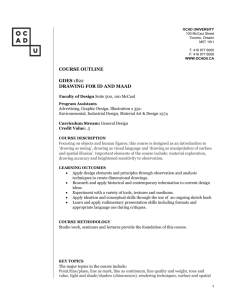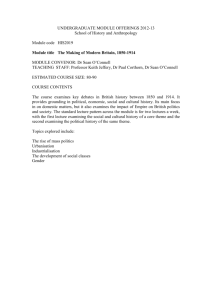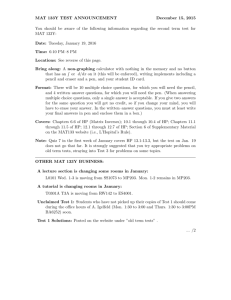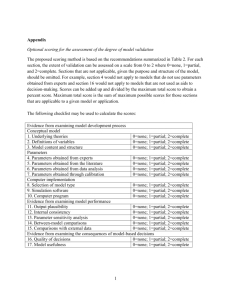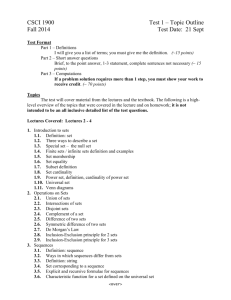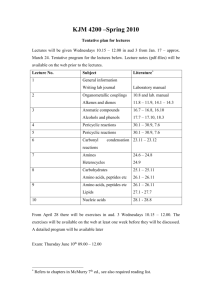PID Course Outline
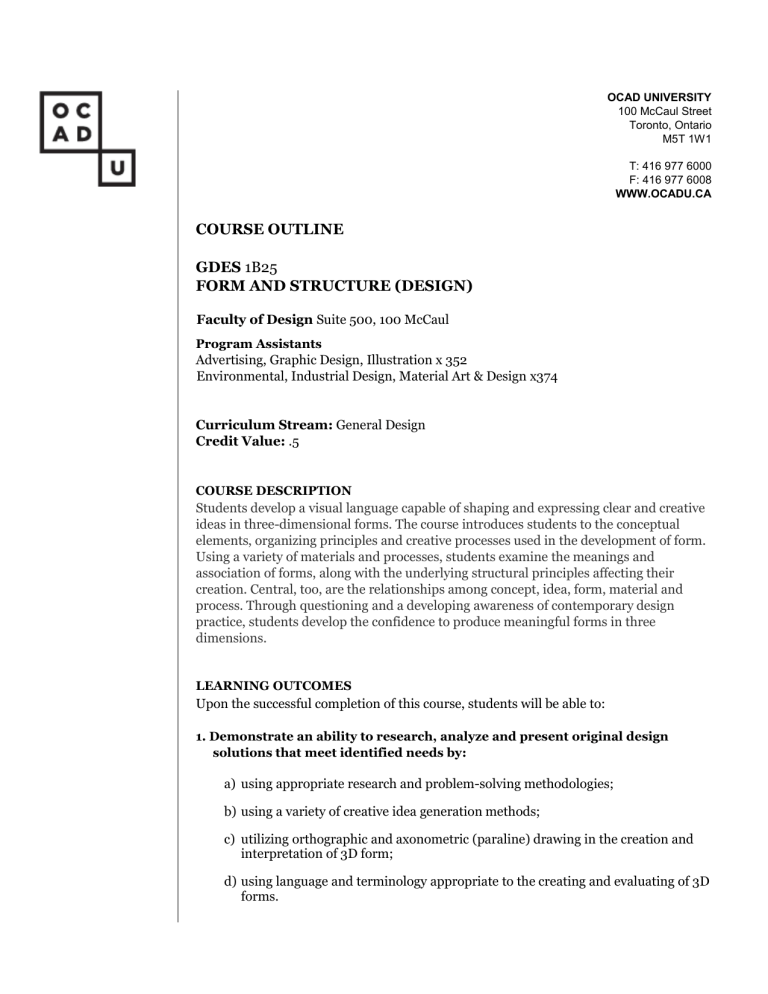
OCAD UNIVERSITY
100 McCaul Street
Toronto, Ontario
M5T 1W1
T: 416 977 6000
F: 416 977 6008
WWW.OCADU.CA
COURSE OUTLINE
GDES 1B25
FORM AND STRUCTURE (DESIGN)
Faculty of Design Suite 500, 100 McCaul
Program Assistants
Advertising, Graphic Design, Illustration x 352
Environmental, Industrial Design, Material Art & Design x374
Curriculum Stream: General Design
Credit Value: .5
COURSE DESCRIPTION
Students develop a visual language capable of shaping and expressing clear and creative ideas in three-dimensional forms. The course introduces students to the conceptual elements, organizing principles and creative processes used in the development of form.
Using a variety of materials and processes, students examine the meanings and association of forms, along with the underlying structural principles affecting their creation. Central, too, are the relationships among concept, idea, form, material and process. Through questioning and a developing awareness of contemporary design practice, students develop the confidence to produce meaningful forms in three dimensions.
LEARNING OUTCOMES
Upon the successful completion of this course, students will be able to:
1. Demonstrate an ability to research, analyze and present original design solutions that meet identified needs by: a) using appropriate research and problem-solving methodologies; b) using a variety of creative idea generation methods; c) utilizing orthographic and axonometric (paraline) drawing in the creation and interpretation of 3D form; d) using language and terminology appropriate to the creating and evaluating of 3D forms.
2. Use a variety of tools and materials in the development of 3D form through: a) orientation to the First Year workshop - safe work practices / health and environmental concerns of materials; b) introduction to a variety of basic materials and their safe handeling, cutting and joining.
3. Construct scale models and prototypes of high quality by: a) using the appropriate tools, materials and process for construction; b) recognizing the elements that constitute quality of construction.
4. Develop an understanding of how the form of designed objects responds to both perceptual and practical constraints by: a) examining the effects that material choice, colour, texture, scale, shape and pattern have on perception and usability; b) examining ergonomics, anthropometrics and spatial theory.
5. Recognize the factors influencing designed objects through: a) identifying the historical, socio-economic, environmental and cultural effects of material and process choice in the creation of objects;
b) examining consumer psychology, demographics and sustainable design.
COURSE METHODOLOGY
Studio work, seminars and lectures provide the foundation of this course.
KEY TOPICS
The major topics in the course include:
Fundamental visual language, 3D design principles, 3D design materials and processes, design concept, production, presentation and critique.
TEACHING METHODS & DELIVERY
The variety of formats used in the class includes project work, discussion, presentations and lectures. The teaching methodology is concerned with ingraining theoretical knowledge through practical experience. Teaching methods and delivery will include a combination of lectures, demonstrations, critiques, individual and group discussions, student presentations and in- class work.
BIBLIOGRAPHY/RECOMMENDED TEXTS
This list is for reference only. Additional reading material will be posted on CANVAS.
Dondis, Donis A. A Primer of Visual Literacy. The MIT Press, 1973.
ISBN 0 -262-54029-0
Wallschlaeger, Charles; Busic-Snyder, Cynthia. Basic Visual Concepts and Principles for
Artists, Architects and Designers. Wm. C. Brown Publishers, 1992.
